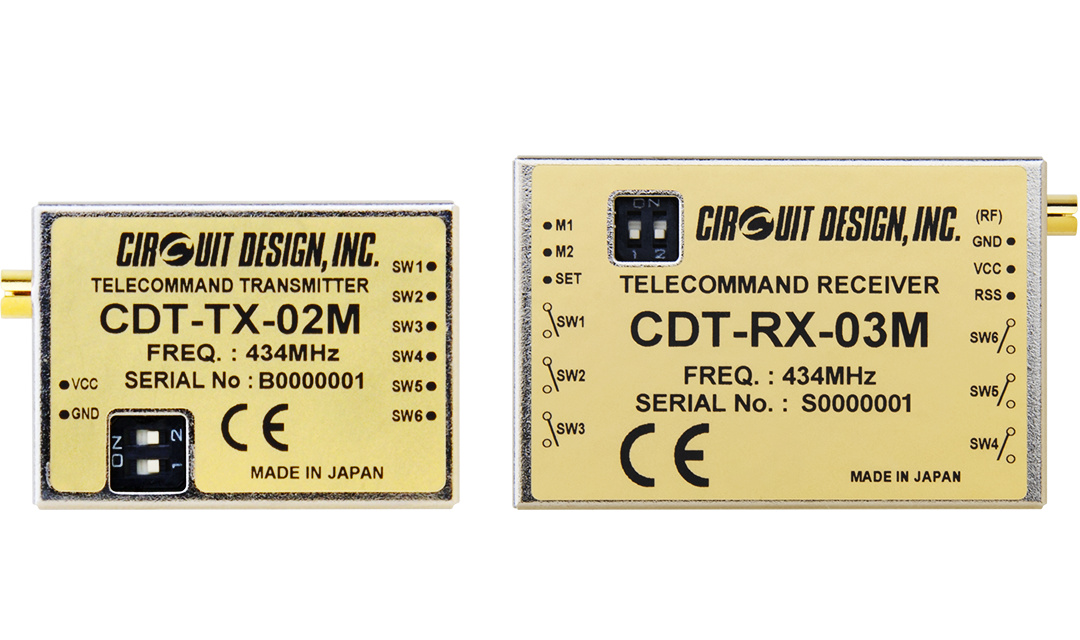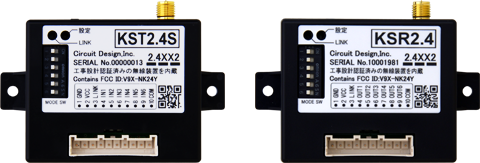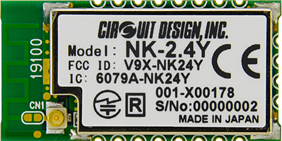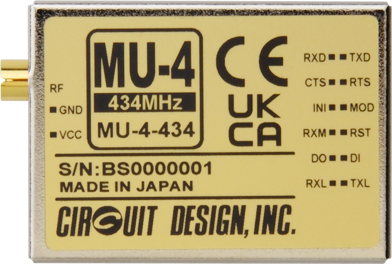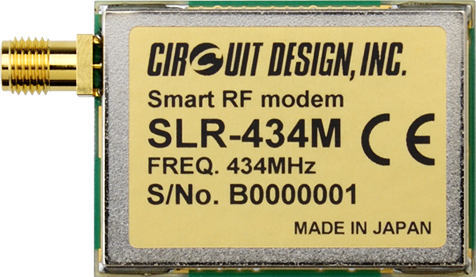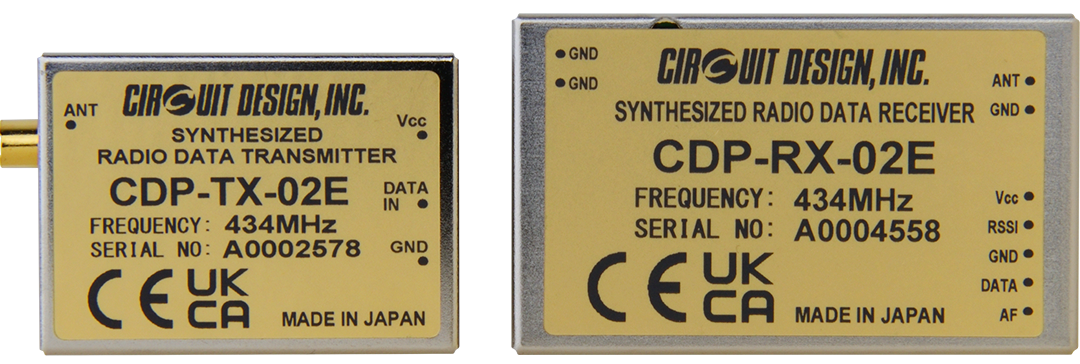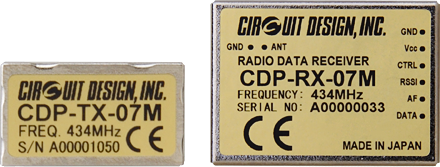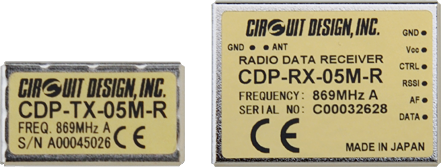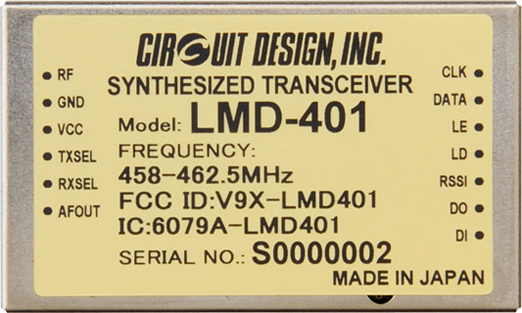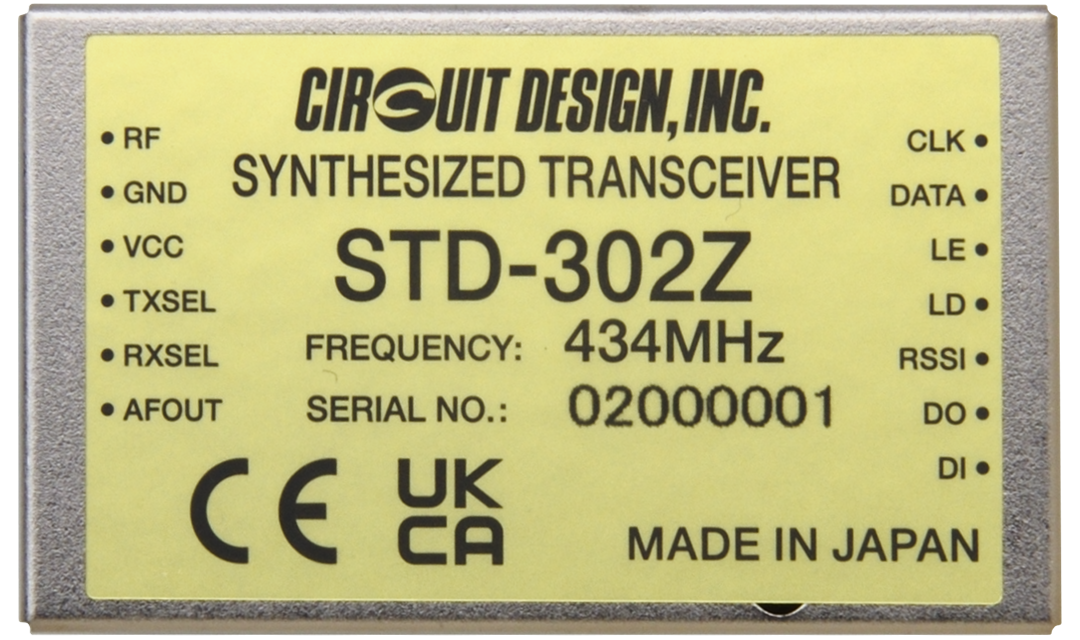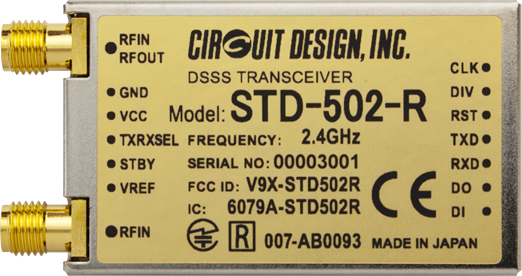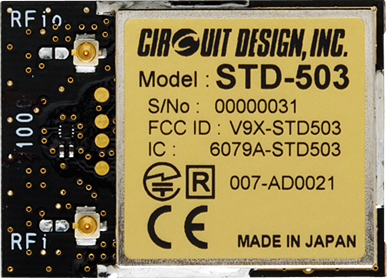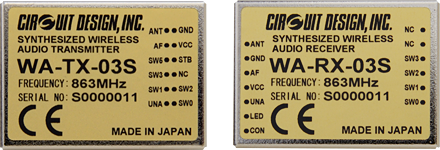What is a radio module?
What is the purpose of the radio module?
For people wishing to change their equipment from wired to wireless communication - it would be extremely difficult without the necessary knowledge. This knowledge consists of high frequency circuit, antenna and RF design. Even if the engineer has the necessary knowledge, developing radio hardware from scratch would possibly take months or any number of years. In addition, purchasing expensive spectrum and modulation analysers for measurement and adjustments would be necessary. Thus, implementing a radio module simplifies development.
Manufacturers of radio modules can guarantee radio performance and operation and the engineer can simply integrate the module into his/her own PCB or product. So there is no need to purchase expensive measuring equipment or develop own radio hardware.
Radio modules and radio equipment development
For development of any radio equipment, focusing on even just the radio part would require deciding specifications, circuit design, construction of communication protocol, checking/improving wireless performance and acquiring certification before the equipment can go into production. There are also many analogue elements in radio so skill and experience is required to ensure sufficient performance.
In contrast, integrating a radio module only requires general electrical knowledge and since the module performance is already guaranteed, such performance confirmation can be eliminated to simplify development.
Additionally, modules with relevant markings such as CE and UKCA ensures compliance with local regulations.
Functions covered by the radio module
To help understand the role of the radio module, we have taken a radio device and divided it into areas according to functionality.

A radio device showing areas of functionality.
How much area the radio module can cover differs from product to product. Modules covering many areas can be connected with just power supply and switch whereas other modules only cover one or two areas e.g. the radio part. When selecting a radio module, care must be taken to understand how much area of the radio device it can cover.
What things can be sent by radio?
Typical examples are serial data and ON-OFF "switching" signals.
It is possible to send video, audio and analogue signals by handling them as serial data using an analogue to digital conversion process. While analogue signals can be transmitted along a wire; radio communication allows transmission of signals digitally which would require analogue to digital / digital to analogue conversion.
With multiple switching signals you can transmit them all at the same time e.g. by using a different frequency channel for each signal. In reality, limitations imposed by the frequency band does not make this practical, so instead information regarding the switch signals are converted to serial data before being transmitted.
Switching signals
How the receiver outputs a ON/OFF signal is determined by its mode. By using the correct mode we can, for example output an ON signal as long as transmitter button is held down (continuous) or output an ON signal one time (one-shot) upon the button being pressed. In applications involving ON/OFF actions, such trigger signal can be used and for applications involving continuous adjustments, a continuous signal can be used.
Modules where transmitter is ON only when input is ON (button pressed):
If radio transmission is intermittent, small batteries (such as ordinary AA batteries) can be used. Such modules can be operated as 1:N or N:1.
Unit/Modules where transmitter is ON when input is ON or OFF (button pressed or not pressed):
Modules where the radio transmission is always ON transmits the button state continuously. Such transmitter/receiver modules can only operate as 1:1.
Because the transmission power and timing can vary for the frequency band according to the radio regulation, it is necessary to select the product and frequency band that matches with the type of signal you want to send.
Another point to mention is latency. For wired systems, the output can react immediately to any change in input. But for wireless communication, handling and processing packets can cause a small delay between input and output. For simple applications such as light ON-OFF, it is generally not an issue. But for applications where timing and continuous operation is required, this delay can be significant.
There maybe times when the receiver may not receive a packet properly due to poor communication, so such cases need to be considered.
Serial data
In wired systems, serial data can be exchanged between two devices "as it is" with no problems. However as anyone can intercept a radio signal in a wireless system, we cannot just modulate serial data onto a carrier. There needs to be certain radio communication controls in place.
Command control
For the Circuit Design modems in the 434 MHz band, control commands developed by Circuit Design allow control of the module (including serial data transmission and reception). Thus the user does not need to implement own radio protocol and only needs to transmit the command containing the desired serial data.
In this situation, because part of the data rate is taken up by the extra information associated with communication control, the available data rate (or data throughput) to be used for communicating user data is lower than the maximum data rate (the RF data rate). For example, the MU-4 modem RF data rate is 4,800 bps but the data rate available to the user is 3,400 bps (less than 2,400 bps if error correction is used)
Modules that use command control:
Transparent interface
Modules categorised as "transparent" do not require the user to follow any command control and the data can be sent and received as raw data. However this does not mean simply replacing your wired transmission with radio modules. Wireless systems require adding some form of radio communication control which includes implementing an existing protocol or developing one from scratch. If you are making a protocol for the first time it is necessary to consider inserting some form of identification, error checking and maybe error correction codes to be appended to the user data. With the addition of frame detection, the data can be transmitted as packets.
To help explain the requirements for making own protocol, Circuit Design has another article, "Requirements for transparent interface" here.
Unlike the command control, the available data rate would be equal to the module's maximum rate.
Modules with transparent communication interface:
Tx/Rx:
Transceiver:
Command vs transparent
The command control developed by Circuit Design allows users to perform serial communication easily without having to worry about the radio part. This simplifies product development.
For the transparent interface, there is no radio communication control so the user needs to use or develop a radio protocol to cover this part. An advantage is the user is free to use own radio protocol (e.g. for compatibility with current equipment), however the procedure for sending and receiving data becomes more complex than using commands.
For more detailed information, Circuit Design has another article that compares command and transparent module interfaces here.
Audio
Audio transmissions can be analogue or converted to digital format prior to transmission. Commonly, audio was transmitted using an analogue medium but recently there has been an increase in audio communications that have evolved to the digital domain, for example: Bluetooth, mobile phones.
As well as selecting a module that meets the desired specifications, transmitting audio wirelessly involves compressing the audio range in order that the transmissions comply with the local radio regulations.
Audio modules (analogue):
Additional information
Other content such as images and analogue data can be transmitted. Image transmissions have shifted to digital as in the case of terrestrial television broadcasts in recent years; with some exceptions in areas such as amateur radio. For analogue signals, it is normally difficult to transmit them as they are, so A/D conversion is performed after which they are finally transmitted as serial data.
